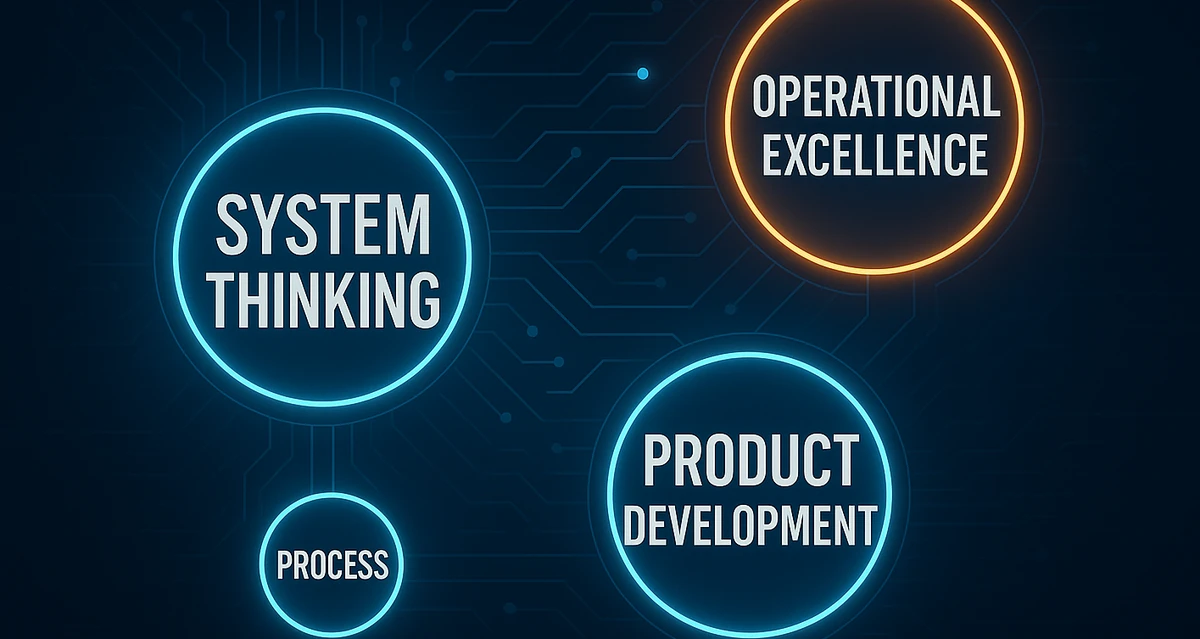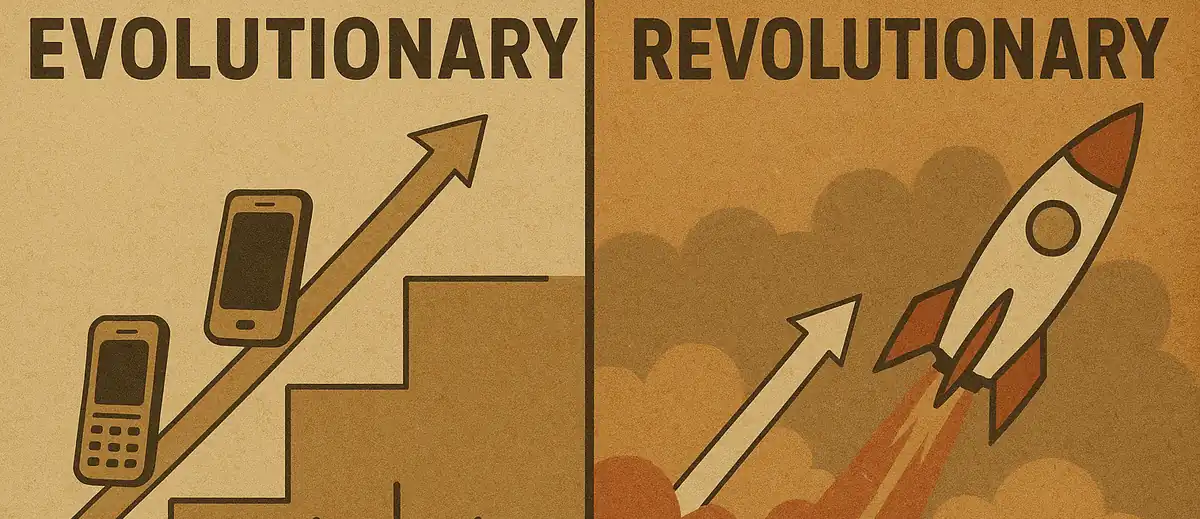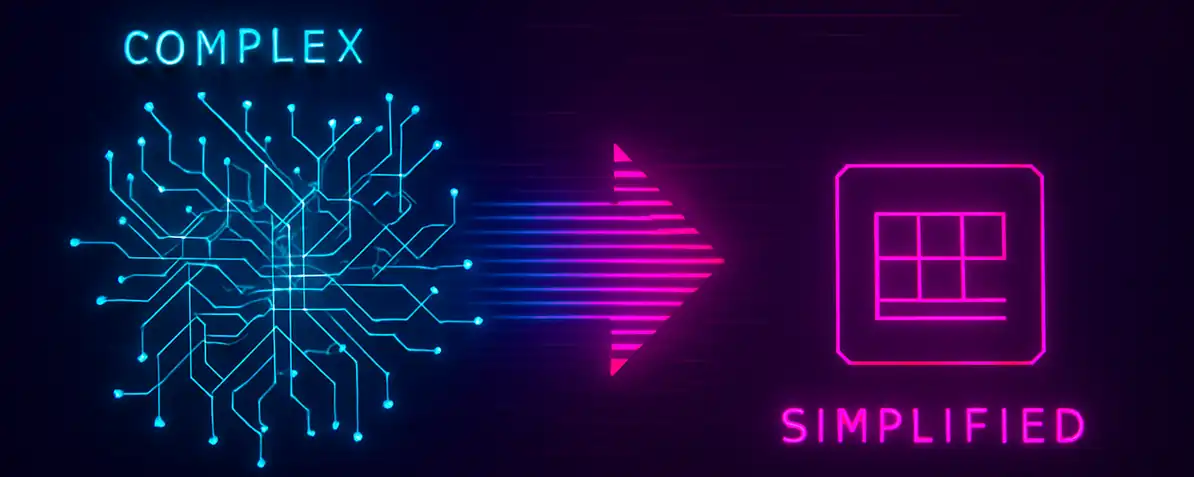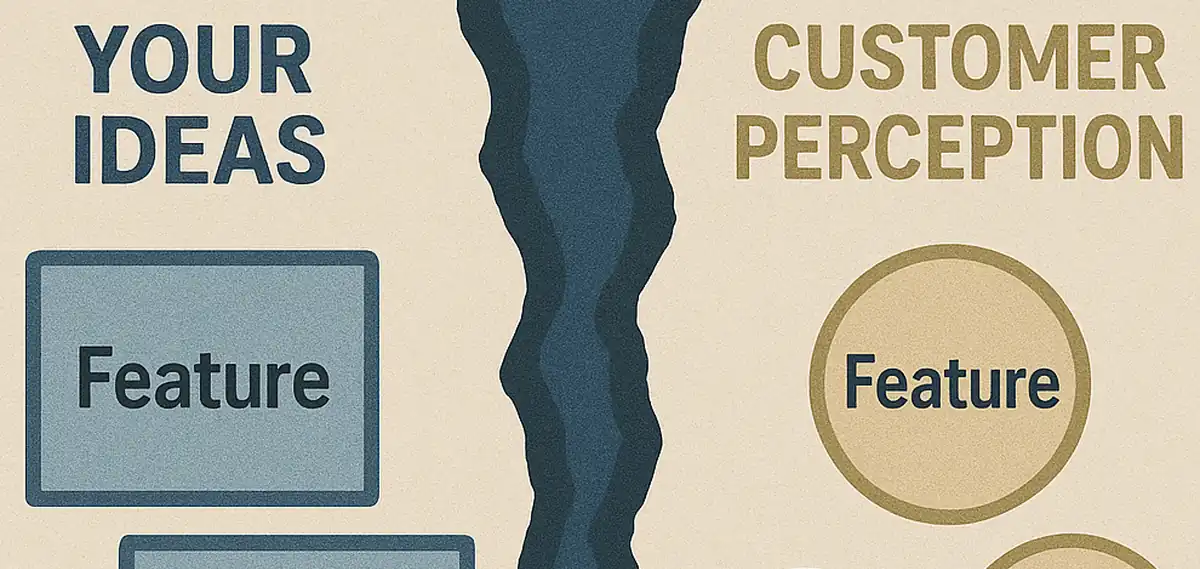The System IS the Product
How viewing your delivery system as a product itself leads to better user experiences.

In the rush to add new features and capabilities, product teams often overlook a fundamental truth: how you build and deliver is as important as what you build and deliver.
The systems, processes, and infrastructure that enable your product development aren’t just operational concerns—they are products themselves, deserving the same strategic focus as customer-facing features.
This perspective shift—from viewing operational systems as mere infrastructure to seeing them as products that serve internal customers—can transform both team performance and end-user experience. According to research from McKinsey’s operations practice, organizations that intentionally design their delivery systems outperform peers on time-to-market, innovation quality, and customer satisfaction by 25-50%.
The Hidden Product in Every Organization
Every time your team deploys code, resolves a customer issue, or launches a feature, they’re interacting with internal products—your deployment pipeline, your support system, your feature flagging infrastructure. These systems have users (your team), stakeholders (leadership, partners), and outcomes they’re trying to achieve. They’re products in every meaningful sense, yet they rarely receive the product thinking they deserve.
As Brandon Chu, former VP of Product at Shopify, notes in his talk on platform management, successful internal platforms treat their fellow engineers as customers, applying product management principles to understand their needs and build what matters.
In an era where digital experiences are defined as much by reliability, speed, and consistency as by feature sets, your operational systems have become competitive differentiators.
The Business Case for System-as-Product Thinking
Thoughtworks’ Technology Radar has consistently highlighted “platform as a product” as a key technique for high-performing organizations, noting that teams who adopt this mindset “build tools and services that make life easier for their users… rather than tools that satisfy a checklist of requirements.”
When operational systems aren’t treated as products:
- Engineers spend up to 40% of their time wrestling with tooling and infrastructure instead of building value
- Processes optimize for compliance rather than flow, creating friction
- Knowledge becomes siloed, creating bottlenecks and single points of failure
- Continuous improvement becomes sporadic and reactive
In contrast, when delivery systems are approached with product thinking:
- Team velocity increases as friction points are systematically eliminated
- Quality improves as testing and validation are built into workflows, not bolted on
- Innovation accelerates as cognitive load shifts from process to problem-solving
- Resilience improves as systems are designed for observability and recovery
The Four Principles of System-as-Product Thinking
1. Know Your Users
Just as you would research external customers, invest in understanding the needs, pain points, and workflows of the people using your delivery systems—developers, QA specialists, product managers, support teams.
GitHub’s engineering organization discovered that by conducting user interviews and journey mapping with their own engineers, they identified and eliminated friction points that were consuming over 20% of engineer time.
2. Define Clear Service-Level Objectives
Operational systems need clear, measurable objectives just like customer-facing products. Establishing SLOs for your delivery system creates alignment and enables prioritization.
Key metrics might include:
- Time from commit to production
- Mean time to detect/resolve incidents
- Developer satisfaction scores
- Knowledge accessibility metrics
3. Build Feedback Loops
Great products evolve through continuous feedback, and your delivery systems should be no different.
- Create channels for team members to report friction points
- Track and analyze system metrics
- Hold regular retrospectives focused on system improvements
- Make iteration visible and celebrate system enhancements
4. Design for Evolution, Not Perfection
The best systems are designed to evolve incrementally based on real-world use, rather than attempting to be perfect from day one.
“If you’re not embarrassed by the first version of your product, you’ve launched too late.”
— Reid Hoffman, co-founder of LinkedIn
This applies equally to internal systems—start simple, focus on core workflows, and build in the instrumentation to learn and adapt based on actual usage.
From Theory to Practice: The System Transformation Canvas
To operationalize system-as-product thinking, Here’s a simple canvas that helps teams apply product thinking to their delivery systems.
| Section | Focus Questions | Purpose |
|---|---|---|
| System Users | Who are the primary users? What are their key needs? What frustrates them today? How do they measure success? | Identify and understand the people who interact with your system |
| Value Proposition | What value does it deliver? How does it make work easier? What would happen without it? How does it connect to external value? | Clarify why this system matters and the benefits it provides |
| User Journey | What are the key touchpoints? Where is the most friction? What are common failure modes? Which steps take the most time? | Map how users interact with the system and identify pain points |
| Metrics | Efficiency metrics Quality metrics User satisfaction Business impact metrics | Establish how you’ll measure success and improvement |
| Improvement Roadmap | Key pain points to address Quick wins vs. strategic changes Resource requirements Timeline and milestones | Plan the evolution of your system with clear priorities |
This canvas guides teams through a structured approach to treating systems as products, ensuring all critical aspects are considered from user needs to measurable outcomes.
Real-World Success: Three Case Studies
1. Reimagining Deployment Systems at Spotify
Spotify’s journey to treating infrastructure as a product led to the development of Backstage, their developer portal platform. By applying product thinking to internal tooling, they created a system that:
- Reduced time to first deployment for new engineers from weeks to days
- Standardized development practices across hundreds of teams
- Created a marketplace for internal tools and services
- Enabled self-service infrastructure for developers
The impact was so significant that Spotify open-sourced Backstage, which has now been adopted by organizations worldwide.
2. Support Systems as Products at Intercom
Intercom revolutionized their customer support by treating their internal support system as a product. According to their product principles, they:
- Mapped the support agent journey to identify friction points
- Created dedicated product teams focused on support tooling
- Measured and optimized for support efficiency metrics
- Integrated customer and agent feedback loops
The result was a 35% reduction in time-to-resolution and measurably higher satisfaction for both customers and support agents.
3. Knowledge Management Transformation at GitLab
GitLab’s approach to documentation demonstrates system-as-product thinking applied to knowledge management. As detailed in their handbook, they’ve built:
- A “handbook-first” approach where documentation is treated as the product
- Clear ownership and quality standards for knowledge assets
- Automated validation of documentation freshness
- Contribution metrics to incentivize documentation improvements
This approach has enabled GitLab to scale an entirely remote organization while maintaining alignment and efficiency.
Starting Your System-as-Product Journey
Ready to transform your delivery systems into intentional products?
1. Map Your Current System Ecosystem
Start by identifying and visualizing all the systems that support your product development and delivery. Include both technical systems (CI/CD, testing frameworks) and human systems (handoffs, approvals, communication channels).
2. Conduct Internal User Research
Schedule sessions with team members to understand their experiences with your current systems.
- Where do you spend most of your time?
- What tasks feel unnecessarily complex?
- Where do you see recurring problems?
- What would make your work more efficient or enjoyable?
3. Identify Your First System Product
Based on research, select one system that:
- Has high impact on team productivity
- Causes consistent friction
- Offers clear potential for improvement
- Has motivated stakeholders
4. Apply Product Thinking to This System
For your selected system:
- Define clear user personas and journeys
- Establish metrics for success
- Create a backlog of improvements
- Allocate dedicated capacity to evolve the system
- Implement feedback mechanisms
Critical Perspectives: Balancing the System-as-Product Approach
While the system-as-product paradigm offers compelling benefits, it’s important to consider valid counterarguments and limitations to this approach.
The Risk of Over-Optimization
Critics like Ron Jeffries, co-creator of Extreme Programming, warn that excessive focus on delivery systems can create a form of “process theater” where teams become more concerned with optimizing their tools than delivering customer value.
Melissa Perri, author of “Escaping the Build Trap,” cautions: “When we optimize for delivery speed without clear connections to customer outcomes, we risk building the wrong things faster.”
This perspective reminds us that delivery systems remain means to an end—customer value—rather than ends in themselves.
Resource Allocation Tensions
Treating systems as products requires dedicated investment, creating potential trade-offs.
| Traditional View | System-as-Product View | Potential Tension |
|---|---|---|
| Resources focused on customer features | Resources split between customer features and internal systems | Feature velocity vs. system investment |
| “Just enough” operational capability | Continuous system evolution | Short-term delivery vs. long-term capability |
| Ad-hoc system improvements | Strategic system roadmaps | Competing priorities for limited resources |
John Cutler’s research indicates that organizations often struggle to find the right balance, with 76% of product leaders reporting tension between investing in capabilities versus customer-facing features.
The Bureaucracy Threat
Some industry voices, including Allen Holub, warn that formalizing delivery systems as products can inadvertently create heavyweight bureaucracies that slow innovation.
Particularly in smaller organizations, a formal system-as-product approach might introduce unnecessary overhead. As GitLab’s organizational approach demonstrates, “There’s a trade-off between process optimization and maintaining nimbleness. Sometimes you need to accept some inefficiency to preserve adaptability.”
Finding the Right Balance
Despite these valid concerns, the solution isn’t to abandon system-as-product thinking but to apply it judiciously.
- Maintain customer focus: Ensure system improvements directly connect to customer experience metrics
- Right-size the approach: Adapt the formality of your system-as-product approach to your organization’s size and maturity
- Measure holistically: Track both delivery system performance and customer outcomes to maintain balance
- This is critical–if you’re delivering WORSE products faster, then you’re not improving your customer experience.
- Start small: Begin with targeted improvements to high-friction areas rather than attempting comprehensive system redesigns
- Bring the team along: Ensure that the team, the stakeholders, and all parties involve understand the goals and benefits, just like how you’d promote a roadmap to your external customers, champion it with your internal customers.
The Future of Product Development Is System-Aware
As products become more complex and markets more competitive, the differentiator for many won’t be individual features but the speed, quality, and resilience with which they can deliver value—all direct outcomes of well-designed delivery systems.
According to Deloitte’s Tech Trends, this shift toward system-as-product thinking is accelerating, with 67% of high-performing organizations now having dedicated “platform engineering” teams focused on internal developer experience.
The organizations that excel in the next decade will be those that navigate the tensions between system optimization and customer focus—recognizing that in a digital world, your system is your product, but only insofar as it enables superior customer experiences.
What delivery system in your organization would benefit most from being treated as a product, and how would you ensure this approach remains connected to customer outcomes?








